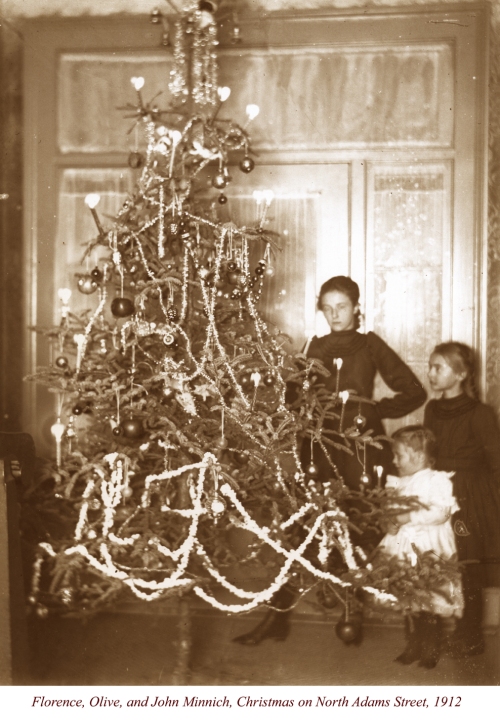Maybe it was sort of in honor of Jean Shepherd’s “A Christmas Story” playing in a loop on Ted Turner’s old TBS and TNT stations, or maybe not. Whatever the reason, on Christmas Eve both my wife and I were hungry for Chinese food, which we ordered and drove over and picked up.
The last time we had Chinese, we decided to try General Tso’s chicken (the name had fascinated me for years), and we enjoyed it, although we went back to our old sesame chicken Christmas Eve. As I looked the menu over this time, I got to wondering about good old Gen Tso, and why somebody named a chicken dish in his honor.
Turns out, he was a major mover and shaker in the late 19th Century in China’s Qing Dynasty, not only an accomplished military leader, but also an effective diplomat. Oddly enough, he was not commemorated in his own country with a dish named in his honor. Rather, General Tso’s chicken was invented in the 1970s here in the U.S. in New York City, inspired by a dish developed by a Taiwanese chef named Peng.
And that, of course got me to thinking about all the other foods and dishes named after individuals, although their origins are mostly unknown these days.

As Vince put it, “Hey, you know the Germans always make good stuff.” Alas, German chocolate cake has nothing to do with Germany. Rather, it’s named after Bakers German’s Sweet Chocolate, developed by Sam German.
German chocolate cake is a good example. It’s not German, as in the country, but rather German as in Baker’s German’s Sweet Chocolate, which was developed in 1852 by Sam German for the Baker’s Chocolate Company. The recipe for the cake was first published in the Dallas Morning Star in 1957 using German’s Sweet Chocolate. Over the years, the name has been shortened, dropping the apostrophe “s” suggesting to the unwary that Germans had something to do with it.
Graham crackers are another familiar food—no S’Mores with out ‘em!—that carry the name of their inventor, this time a guy by the name of Sylvester Graham. Graham was a Presbyterian minister back in the 1800s who was a health food fanatic who developed a process for milling whole wheat flour to be used in what he considered healthy eating. I suspect Sylvester would be horrified at what generations of Girl and Boy Scouts have done to his healthy crackers.
Which brings us to Fettuccine Alfredo, one of my favorite pasta dishes, that was created by early 20th Century Italian chef Alfredo di Lelio. He developed it as a mild dish for his pregnant wife. Tourists eating at his restaurant in Rome liked it and spread the recipe around the world.
A number of fruits and vegetables are named after the folks who developed them, including boysenberries. Rudolf Boysen, a botanist who was also the superintendent of parks in Anaheim, California, crossed a loganberry, raspberry, and blackberry sometime in the 1920s to arrive at the boysenberry. Its fame was assured when Walter Knott started pushing boysenberry jam, jelly, and syrup at his Knott’s Berry Farm California tourist trap.
Clementines, those delicious little oranges, are named after Père Clément Rodier. The good father either came across a mandarin orange mutation while serving in North Africa in the early 20th Century, or he himself made a mandarin and Seville orange cross to create the tiny, sweet fruit. That’s at least one story, the other being clementines may have been created by some nameless Asian horticulturalist long before Father Clement got into the act.

Granny Smith apples, named after Marie Anna “Granny” Smith, the Australian woman who first cultivated them, are good cooking apples as well as pretty good eating. They are popular all over the world these days.
Lots of varieties of apples are named after the orchardists who developed them by cross-breeding. The Granny Smith apple, which was discovered, and then propagated, in in Australia in 1868 by Marie Anna “Granny” Smith was named in her honor. Closer to home here in Kendall County, the Minkler apple was named after 19th Century orchardist Smith Minkler, who developed it from seedlings given him in lieu of cash when he worked for local French American businessman and property owner Pierre Lamsette, who was also known as Peter Specie. While Granny Smiths are still very popular, Minklers are mostly only found now in old farmyard orchards and at nurseries that feature heirloom apples.
As well as fruit, we Americans love our salads. Last week we ate out at one of our local pizza/Italian beef/hot dog joints and I had a great Cobb salad, which I though was probably so named because it had kernels of sweet corn in it. But no, the Cobb salad was invented by Robert H. Cobb, the owner of the famed Brown Derby Restaurant in Hollywood. Sometime around 1936, Cobb rustled up a salad for himself using ingredients he had in the kitchen. He apparently liked it so well, he started serving it in his restaurant after naming it after himself.
And you might think Caesar salad was named after Julius or one of the other long line of Caesars who ruled Rome, but you’d be wrong. Granted, its creator, Caesar Cardini, was of Italian ancestry, but he was an American restaurateur and chef. One of his buddies created the Caesar salad in the restaurant at the Hotel Caesar in Tijuana, Mexico and named it for the hotel and his friend.
Ever wonder about nachos? About 1943, Ignacio “Nacho” Anaya created his original dish by making a bed of fried corn tortillas and then covered them with melted cheddar cheese and jalapeño peppers.
Hershey, Pennsylvania gets all the press about its famous chocolate candy, but really, Illinois probably ought to own the nation’s candy making crown. Heath bars, for instance, those delicious little English toffee bars were created in downstate Robinson by the owners of Heath Brothers Confectionery, Bayard and Everett Heath. A salesman brought the brothers a recipe developed by a Greek candy maker down in Champaign, and after some tweaking, the Heaths turned it into a local favorite during the Roaring 1920s. At the time, Crawford County was an oil production center, and the wildcatters who came and went carried those little Heath Bars with them all over the U.S. The orders rolled in and the rest is history.
Also developed right here in Illinois by Chicago’s Williamson Candy Company was the chewy Oh Henry! peanut, caramel, fudge and chocolate bar. The story goes that a young fellow by the name of Henry used to stop by the company’s offices who could be convinced to do odd jobs and the call for his services, “Oh Henry!” became so frequent they named a new candy bar in his honor in 1920. Although there are other explanations of the candy bar’s name, the company is sticking with their story about good old Henry.

Hard to beat a classic Reuben sandwich on marbled rye, even if it’s almost impossible to get one these days with real Russian dressing.
Not sure where we’d be these days if somebody hadn’t invented sandwiches. The name itself is easily traced back to John Montagu, 4th Earl of Sandwich (1718–1792). Now the Earl didn’t invent sandwiches; they were popular, especially among the lower classes for a long time before the Earl was a glint in his father’s eye. But the name for two pieces of bread with varied fillings is said to have been given the dish back during the Seven Years War when the Earl demanded food that could be easily and neatly handled while playing cards with his friends.
One of my favorite sandwiches is the Reuben sandwich. Although it’s almost impossible to find a true Reuben these days—it requires Russian dressing, not the almost-always-substituted Thousand Island Dressing—many local restaurants make a passable version. The best here in the Oswego area is at the Riverview Diner in Montgomery. Food historians believe the sandwich was invented at Reuben Kolakofsky’s restaurant in Omaha, Nebraska around 1925 to feed his poker buddies. On the other hand, some believe that Arnold Reuben, a New York City restaurateur, created it and named it after himself around 1914.
Finally, another of my favorite dishes is Salisbury steak, and it turns out the guy it was named for had dietary theories that pretty much exactly mirror my own. Dr. James H. Salisbury invented the dish named in his honor, and he strongly advised his patients to eat it three times a day, while limiting their intake of vegetables (which he considered to be somewhere between dangerous and evil) and starches.
A man truly after my own heart. And stomach.
*Turns out while I thought I was being original with this title, Kimberly Kohatsu already used it on a 2014 piece on Huffington Post. Oh well…











